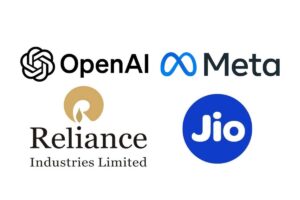OpenAI Unveils a Comprehensive Guide for Identifying and Scaling AI Applications in Enterprise Workflows

Understanding OpenAI’s Practical Guide for AI in Enterprises
Artificial Intelligence (AI) has made significant inroads across various industries, and its potential remains largely untapped. OpenAI has recently published a guide designed to help businesses effectively identify and scale AI applications within their workflows. This guide aims to simplify the process and support organizations in making informed decisions when integrating AI technologies.
The Importance of AI in Business
Why Implement AI?
AI can streamline operations, enhance customer experiences, and boost productivity. Here’s a breakdown of the benefits:
- Automation: Reduces redundancy by automating routine tasks, allowing employees to focus on higher-value work.
- Data Analysis: Offers advanced analytics capabilities that can uncover insights from large datasets.
- Personalization: Enhances customer interactions by providing tailored recommendations based on individual preferences.
- Decision Making: Supports decision-making processes through predictive analytics and comprehensive data evaluations.
Challenges in AI Adoption
While the advantages of AI are clear, many businesses face obstacles when implementing these technologies, such as:
- Lack of Technical Knowledge: Employees may not possess the necessary skills to understand or utilize AI tools.
- Data Quality: Poor or inconsistent data can lead to misleading outputs and ineffective strategies.
- Change Management: Resistance to change from staff can stymie successful AI integration.
- Resource Allocation: Budgets or time constraints may limit the scope of AI projects.
Key Components of the Guide
OpenAI’s guide is structured to equip businesses with the knowledge they need to harness AI effectively. Here are several essential components:
Identifying Use Cases
The first step in leveraging AI is identifying where it can be beneficial. The guide suggests:
- Assessing Current Processes: Review existing workflows to pinpoint areas ripe for improvement.
- Engaging Stakeholders: Involve employees from various departments to gather insights on pain points and potential AI applications.
- Exploring AI Capabilities: Understand different types of AI technologies available, such as machine learning, natural language processing, and computer vision.
Scaling AI Solutions
Once AI use cases have been identified, organizations must focus on scaling these solutions. The guide emphasizes:
- Pilot Testing: Begin with small-scale implementations to test the effectiveness of the AI solution before a full rollout.
- Iterative Improvement: Continually refine AI models and processes based on feedback and performance data.
- Training Programs: Establish educational initiatives to enhance staff understanding and comfort with AI technologies.
Measuring Success
To ensure the AI implementation is effective, businesses should establish metrics for evaluation. Consideration should be given to:
- Performance Metrics: Track KPIs such as efficiency gains, cost reductions, and customer satisfaction improvements.
- User Feedback: Regularly solicit input from employees and customers to gauge satisfaction with AI tools.
- Return on Investment: Analyze the financial implications of AI implementations to determine their overall value to the business.
Practical Steps for Implementation
OpenAI’s guide outlines practical steps businesses can take as they embark on their AI journey:
- Define Objectives: Clearly outline what the organization aims to achieve with AI.
- Invest in Training: Provide staff with the necessary resources and training to be comfortable with new technologies.
- Collaborate with Experts: Partnering with AI specialists can help organizations avoid common pitfalls and enhance their AI strategies.
- Embrace an Experimental Mindset: Companies should be willing to experiment and iterate quickly based on results and feedback.
By following the recommendations laid out in OpenAI’s guide, organizations can more confidently navigate their paths toward effective AI implementation, resulting in greater operational efficiencies and enhanced business outcomes.






